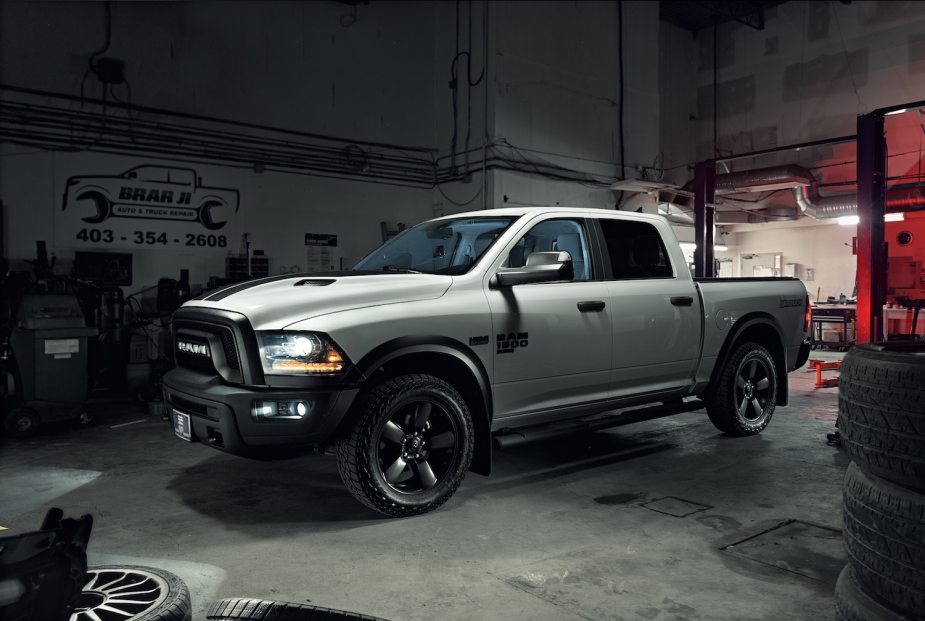Ram trucks consistently rank above the pickup average in reliability. But the Ram 1500 half-ton truck is not without its problems. One of the most common complaints from owners is a coolant leak, which can overheat an engine and cause serious problems. But a 1A Auto mechanic revealed what components cause the fourth-generation Ram 1500 to leak coolant and how to diagnose a malfunctioning truck.
What causes a coolant leak?
Vehicle coolant is a liquid that circulates between the radiator and the engine block to keep temperatures low. Any component in this circuit can malfunction and cause a leak, but different makes and models have specific weak points that are worth checking.

Let’s talk about the Ram 1500 coolant leak. My colleague Nathanial Ehringer reported on the most common Ram 1500 problems and listed the following cooling circuit components that could be leaking: the radiator, the coolant pump ‘water (which circulates the coolant), the housing gasket that seals the thermostat to the engine (the thermostat controls). this circuit), heater return tube o-ring, intake manifold gasket, timing cover gasket.
Obviously, the coolant circuit (which even goes through the cabin heater) has many components that can leak. Lucky for us, auto parts company 1A uses experienced mechanics to create Youtube guides on common vehicle problems. A mechanic named Lenny revealed that in his experience, Ram trucks develop a leaking water pump, radiator, or radiator cap. Scroll to the bottom of this article to see these components for yourself.
See a coolant leak?
If your vehicle has a coolant leak, the first thing you’ll notice is a drop in the coolant level. Most plastic radiator coolant overflow tanks have a “full” and “add” line for your reference. But you may also see coolant residue leaking out.

Once upon a time, cars only used water as engine coolant. But in a modern car, the coolant is a mixture of water and ethylene glycol, so the liquid does not freeze if a vehicle is left outside in the winter overnight. This liquid is green and if it leaks out, it can leave a trail of greenish gummy deposits.
Lenny revealed that a common place for the Ram 1500 to leak coolant is the seam between the aluminum body and the plastic uprights of its radiator. Ram mounts the radiator with a gasket between that aluminum and the plastic, but that gasket sometimes “doesn’t last as long as it should.” Another point is between the cooling circuit water pump and the HEMI engine block. Lenny said a leaking water pump is a common problem in several Chrysler products.
Note that while Lenny was addressing issues with the fourth-generation Ram 1500 (2009-2017), the automaker was still using the same drivetrain across its current trucks.
Can a Ram 1500 coolant leak be fixed?
Your Ram 1500 could be leaking coolant from a faulty radiator cap (easy to fix) or a cracked engine block (difficult and expensive). So before you set the price to fix the problem, you’ll want to identify where the coolant is coming from.

If you can’t detect any antifreeze reservoir that would show the source of the leak, you’ll want to pull the dipstick and make sure there’s no liquid in your oil. If antifreeze seeps into the crankcase, the oil will foam into a gray mixture the consistency of mayonnaise.
If you don’t have coolant in your oil, you’ll need a special tool to locate your leak. Lenny added that a simple pressurization of the coolant circuit replaces the radiator cap and has a hand bulb that you can press to add pressure. As you add pressure, you should be able to see where the coolant is coming from.
Once you know the problem component in your Ram 1500’s cooling circuit that is leaking antifreeze, you can get an estimate of the parts and labor costs needed to fix it.
Below, find out why the most common Ram 1500 problems only affect certain engines, or watch Lenny’s full rundown of the top 5 problems with the 4th generation Ram 1500 in the video below:


